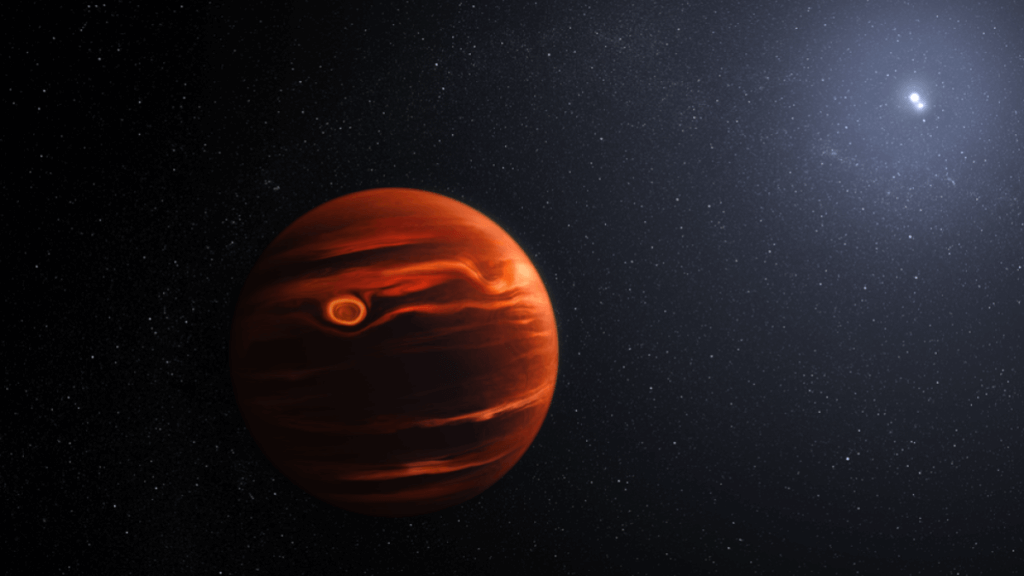
Webb telescope spots unusual world with terrifying clouds (Image Credit: Mashable)
A bad day at the beach is better than a good day at the office, but that saying wouldn’t hold up in a recently studied world 40 light-years from Earth, where every day might be a gusty beach purgatory.
On exoplanet VHS 1256 b(Opens in a new tab), the clouds swirl with sizzling, gritty flecks of sand. The weather might give visitors a great exfoliating facial, but it definitely wouldn’t be relaxing. Up in the clouds, temperatures reach a scorching 1,500 degrees Fahrenheit. It’s a perpetual, blistering sandstorm. And when the clouds get too heavy, rainstorms likely pelt the planet with the sandy mixture, scientists say.
“The finer silicate grains in its atmosphere may be more like tiny particles in smoke,” said Beth Biller of the University of Edinburgh in Scotland, in a statement(Opens in a new tab). “The larger grains might be more like very hot, very small sand particles.”
Researchers recently used the James Webb Space Telescope, the preeminent observatory in the sky run by NASA, the European Space Agency, and the Canadian Space Agency, to study the unusual exoplanet. The telescope’s observations reveal a world with some similar characteristics to Earth’s while including many other brutal conditions.
Tweet may have been deleted
(opens in a new tab)
(Opens in a new tab)
For instance, scientists found the planet’s atmosphere had clear signs of water, methane, carbon monoxide, and carbon dioxide — familiar chemicals in this world. Its days are only two hours shorter than ours.
But it takes 10,000 years for it to make a complete trip around its two stars. A NASA Twitter account described it as “Tatooine-like(Opens in a new tab),” referencing Luke Skywalker’s home in Star Wars, which had twin sunsets. Given how far away the planet is from its host stars — about four times farther than Pluto is from the sun — their light wouldn’t shine that bright.
The new findings(Opens in a new tab) were published in The Astrophysical Journal Letters on March 22.
Tweet may have been deleted
(opens in a new tab)
(Opens in a new tab)
Want more science and tech news delivered straight to your inbox? Sign up for Mashable’s Top Stories newsletter today.
“The larger grains might be more like very hot, very small sand particles.”
One of Webb’s primary purposes is to study the atmospheres of other planets outside our solar system through what’s known as exoplanet spectra(Opens in a new tab). Molecules within an atmosphere absorb certain light wavelengths, or colors. By splitting the light into its basic parts — a rainbow — astronomers can detect what light segments are missing to discern the molecular makeup of the atmosphere. Since this particular exoplanet orbits at such a long distance from its stars, it was easier than usual to perform this type of study, according to the coauthors of the paper.
Tweet may have been deleted
(opens in a new tab)
(Opens in a new tab)
Discoveries of water and methane, for example — main ingredients of life — could be signs of potential habitability or biological activity in other faraway worlds in deep space. The composition of Earth’s atmosphere changed, for example, when life arose on the planet, revealing carbon dioxide and nitrogen.
Biller said their observations of the exoplanet thus far are thrilling because they illustrate how clouds on another planet could be totally different from the water vapor clouds of Earth.
VHS 1256 b’s skies are also thought to be turbulent because the planet is relatively young, as far as cosmic objects go: about 150 million years old. But as it ages over billions more years, the planet’s cloud cover may clear up.





